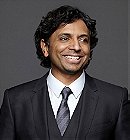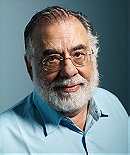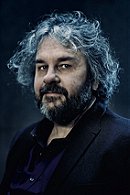The Greatest Movies Never Made
Sort by:
Showing 6 items
Rating:
List Type:
Number 13 (1922)
This was to be Hitchcock's directorial debut, but budgetary problems canceled the production after only a few scenes were shot.
Wikipedia
Greenmantle (1939–1942)
Hitchcock very much wanted to direct a follow-up to The 39 Steps, and he felt that Greenmantle by John Buchan was a superior book. He proposed that the film would star Cary Grant and Ingrid Bergman, but the rights from the Buchan estate proved too expensive.
Wikipedia
Escape (1940)
Hitchcock desperately wanted to direct Norma Shearer, Robert Taylor, and Conrad Veidt in one of the first World War II dramas, Escape. Hitchcock, a long-time admirer of Shearer's acting, had sought for years to find a suitable project for her. However, Hitchcock was shut out of the project when the novel Escape by Ethel Vance (pen name of Grace Zaring Stone) was purchased by Metro-Goldwyn-Mayer. Hitchcock knew he could never work for the notorious MGM studio head Louis B. Mayer, who selected Mervyn LeRoy to produce the film. Years later, Hitchcock made the statement about the lack of true Hollywood leading ladies with the quote, "Where are the Norma Shearers?"
Wikipedia
The Bramble Bush (1951-1953)
The Bramble Bush would have been an adaptation of a 1948 novel by David Duncan about a disaffected Communist agitator, who on the run from the police, is forced to adopt the identity of a murder suspect. The story would be adapted to take place in Mexico and San Francisco.
The project, originally to come after I Confess (1953) as a Transatlantic Pictures production to be released by Warner Brothers, had a high budget which made it a difficult project. Hitchcock did not feel that any of the scripts lifted the movie beyond an ordinary chase story, and Warner Brothers allowed him to kill the project and move on to Dial M for Murder (1954).
The theme of the hero assuming a dangerous new identity would become the kernel of the script for North by Northwest (1959). Michelangelo Antonioni's film The Passenger (1975) tells a similar story, but is not based on Duncan's book. The 1960 film The Bramble Bush, starring Richard Burton and Barbara Rush, and released by Warner Brothers, was based on a Charles Mergendahl novel, and had no relation to Duncan's book.
Wikipedia
Flamingo Feather (1956)
This was to be a big-budget adaptation of Laurens van der Post's novel of political intrigue in Southern Africa. James Stewart was expected to take the lead role of an adventurer who discovers a concentration camp for Communist agents; Hitchcock wanted Grace Kelly to play the love interest.
After a disappointing research trip to South Africa where he concluded that he would have difficulty filming, especially on a budget – and with confusion of the story's politics and the seeming impossibility of casting Kelly, Hitchcock deferred the project and instead cast Stewart in The Man Who Knew Too Much (1956). Hitchcock travelled to Livingstone at The Victoria Falls and was a guest of Harry Sossen one of the prominent inhabitants of this pioneer town. Hitchcock and Sossen were photographed together at the newly opened Livingstone Airport and the event was recorded in the local papers. Sossen was also in communication with Laurens van der Post who gave him a signed copy of the book Flamingo Feather during a visit to the Falls (staying at the Victoria Falls Hotel). Sossen's daughter Marion is in possession of the book today and a number of letters between her father and van der Post.
Wikipedia
The Blind Man (1960)
Following Psycho, Hitchcock re-united with Ernest Lehman for an original screenplay idea: A blind pianist, Jimmy Shearing (a role for James Stewart), regains his sight after receiving the eyes of a dead man. Watching a Wild West show at Disneyland with his family, Shearing would have visions of being shot and would come to realize that the dead man was in fact murdered and the image of the murderer is still imprinted on the retina of his eyes. The story would end with a chase around the ocean liner RMS Queen Mary. Walt Disney reputedly barred Hitchcock from shooting at Disneyland after seeing Psycho. Stewart left the project, Lehman argued with Hitchcock, and the script was never shot.
Wikipedia
Village of Stars (1962)
Hitchcock bought the rights to the 1960 novel Village of Stars by David Beaty (written under the pen name Paul Stanton) after The Blind Man project was canceled. The book follows a RAF V bomber crew given an order to drop a nuclear bomb, only to have the order aborted. Unfortunately, the bomb is resisting attempts to defuse it and the plane can only stay in flight for a limited time.
Wikipedia
Trap for a Solitary Man (1963)
Trap for a Solitary Man was scheduled to be directed by Hitchcock in widescreen by Twentieth Century-Fox. The story, based on the French play Piege Pour un Homme Seul by M. Robert Thomas, follows a young married couple on holiday in the Alps. The wife disappears, and after a prolonged search the police bring back someone they claim to be her; she even says she is the man's wife, but the man has never seen her before.
Wikipedia
Mary Rose (1964)
Hitchcock had long desired to turn J. M. Barrie's 1920 play Mary Rose into a film. In 1964, after working together on Marnie, Hitchcock asked Jay Presson Allen to adapt the play into a screenplay. Hitchcock would later tell interviewers that his contract with Universal allowed him to make any film, so long as the budget was under $3 million, and so long as it was not Mary Rose. Whether or not this was actually true, Lew Wasserman was not keen on the project, though Hitchcock never gave up hope of one day filming it
Wikipedia
The Three Hostages (1964)
In 1964, Hitchcock re-read another Richard Hannay novel by John Buchan, The Three Hostages, with a mind to adapting it. As with Greenmantle a quarter of a century earlier, the rights were elusive. But also the story was dated, very much rooted in the 1930s, and the plot involved a villain whose blind mother hypnotizes the hero. Hitchcock, in interviews, said that he felt that the portrayal of hypnosis did not work on film, and that films that attempted this portrayal, in Hitchcock's opinion, turned out poorly.
Wikipedia
Frenzy (a.k.a. Kaleidoscope) (1964–1967)
Although Hitchcock made a film called Frenzy in 1972, that film's title and some plot points came from an idea Hitchcock had a few years earlier for a prequel to Shadow of a Doubt. Hitchcock approached many writers including Samuel Taylor and Alec Coppel, but in the end engaged an old friend, Benn Levy to flesh out his sketchy idea.
The story would have revolved around a young, handsome bodybuilder (inspired by Neville Heath) who lures young women to their deaths, a version of the character known as 'Merry Widow Murderer' in Shadow of a Doubt. The New York police set a trap for him, with a policewoman posing as a potential victim. The script was based around three crescendos dictated by Hitchcock: the first was a murder by a waterfall; the second murder would take place on a mothballed warship; and the finale, which would take place at an oil refinery with brightly colored drums.
Hitchcock showed his script to his friend François Truffaut. Though Truffaut admired the script, he felt uneasy about its relentless sex and violence. Unlike Psycho, these elements would not be hidden behind the respectable veneer of murder mystery and psychological suspense, and the killer would be the main character, the hero, the eyes of the audience.
Universal vetoed the film, despite Hitchcock's assurances that he would make the film for under $1 million with a cast of unknowns, although David Hemmings, Robert Redford, and Michael Caine had all been suggested as leads. The film – alternately known as Frenzy or the more "sixties"-esque Kaleidoscope – would not be made.
Test footage from this project is included in the 1999 Encore cable TV documentary Dial H For Hitchcock: The Genius Behind the Showman.
Wikipedia
R.R.R.R. (1965)
Hitchcock approached Italian comedy-thriller writers Agenore Incrocci and Furio Scarpelli (Age & Scarpelli), writers of Big Deal on Madonna Street, to write a screenplay around an original idea Hitchcock had carried in his head since the late 1930s. A New York City hotel run by an Italian immigrant and his family who, unknown to him, are using the hotel as cover for crimes, including the theft of a valuable coin from a guest of the hotel. (R.R.R.R. is the highest value of coin.)
The Italian screenwriters struggled with the story, and were not helped by the language barrier. Universal Studios were not keen on the idea and persuaded Hitchcock to move on to something else.
Wikipedia
The Short Night (1976–1979)
Hitchcock's last, unfinished project was The Short Night an adaptation of the spy thriller of the same name by Ronald Kirkbride. A British double agent (loosely based on George Blake) escapes from prison and flees to Moscow via Finland, where his wife and children are waiting. An American agent – whose brother was one of the traitor's victims – heads to Finland to intercept him but ends up falling for the wife. It would be Hitchcock's third attempt – after Torn Curtain and Topaz – to produce a "realistic Bond film". Clint Eastwood, and Sean Connery were possible male leads. Liv Ullman was asked to play the double agent's wife. Catherine Deneuve was also asked to star. Walter Matthau was considered for the villain role. Ed Lauter was also discussed for a role as one of Matthau's prison mates.
The first writer assigned to the picture, James Costigan, quarreled with the director, who asked for him to be paid off. Then Ernest Lehman agreed to work on the script. Lehman felt the story should focus on the American spy and left out the double agent's jailbreak. Lehman left the film, too, and Hitchcock asked old friend Norman Lloyd to help him write a long treatment. Lloyd, like Universal, was concerned that Hitchcock's failing health meant that the movie might not get made. When Hitchcock suggested moving straight on to the screenplay, Lloyd objected saying they were unprepared. Hitchcock reacted angrily, fired Lloyd, and worked on the treatment himself.
After a while, Hitchcock accepted that he needed another writer to work with him, and Universal suggested David Freeman. Freeman helped Hitchcock complete the treatment and wrote the screenplay. He wrote about his experiences in the 1999 book The Last Days of Alfred Hitchcock, which includes his completed screenplay. The circumstances surrounding Hitchcock's retirement were given by producer Hilton A. Green during the documentary Plotting "Family Plot". According to Green, during pre-production for The Short Night Hitchcock met with Green to tell him that his poor health would prevent him from making the film that was to be the follow-up to Family Plot. After trying to talk Hitchcock out of his decision, Green agreed to Hitchcock's request to bring the news of his decision to retire to studio head Lew Wasserman, a long-time friend of Hitchcock.
Wikipedia
Michael M's rating:


The Burning Secret and Natural Child
In 1956, after MGM turned down Harris and Kubrick's request to film Paths of Glory, they invited him to look through their other properties. Harris and Kubrick discovered Stefan Zweig's novel The Burning Secret, in which a young baron tries to seduce a young Jewish woman by first befriending her twelve-year-old son, who eventually becomes wise to the situation. Kubrick was very excited about this novel and hired novelist Calder Willingham to produce a screenplay, but Production Code restrictions made the project impossible.
Kubrick had earlier been interested in adapting another Calder Willingham novel (Natural Child), but quickly realized it could not be done within the Production Code.
Wikipedia
Napoleon
After the success of 2001, Kubrick planned a large-scale biographical film about Napoleon Bonaparte. He conducted research, read books about the French Emperor, and wrote a preliminary screenplay (which has become available on the Internet). With the help of assistants, he meticulously created a card catalog of the places and deeds of Napoleon's inner circle during its operative years. Kubrick scouted locations, planning to film large portions of the film on location in France, and in the UK studios. He was also going to film the battle scenes in Romania, where he enlisted the help of the Romanian army, which gave Kubrick 40,000 soldiers, and 10,000 cavalrymen to film the battle scenes with paper costumes. In a conversation with the British Film Institute, Kubrick's brother-in-law Jan Harlan, stated that at the time the film was about to go into production, David Hemmings was Kubrick's favorite choice to play Napoleon, and Audrey Hepburn was his favorite choice to play Josephine. In notes to his financial backers, preserved in The Kubrick Archives, Kubrick told them he was unsure how his Napoleon film would turn out, but that he expected to create "the best movie ever made."
Ultimately, the project was canceled for the prohibitive cost of location filming, the Western release of Sergei Bondarchuk's epic film version of Leo Tolstoy's novel War and Peace (1968), and the commercial failure of Bondarchuk's Napoleon-themed film Waterloo (1970). Much of Kubrick's historical research would influence Barry Lyndon (1975), the storyline of which ends in 1789, about 15 years before the Napoleonic Wars began. As late as 1987, Kubrick stated that he had not given up on the project, mentioning that he had read almost 500 books on the historical figure and that he was convinced that a film worthy of the subject had not yet appeared.
Wikipedia
Aryan Papers
As early as 1976, Kubrick wanted to make a film about the Holocaust, trying to persuade Isaac Bashevis Singer to contribute an original screenplay. Kubrick sought a "dramatic structure that compressed the complex and vast information into the story of an individual who represented the essence of this man-made hell." Singer declined, saying, "I don't know the first thing about the Holocaust." In the early 1990s, Kubrick almost went into production on a film of Louis Begley's Wartime Lies, the story of a boy and his aunt in hiding during the Holocaust. The first-draft screenplay, titled Aryan Papers, had been penned by Kubrick himself. Full Metal Jacket co-screenwriter Michael Herr reports that Kubrick had considered casting Julia Roberts or Uma Thurman as the aunt. Eventually, Johanna ter Steege was cast as the aunt and Joseph Mazzello as the young boy, with Kubrick even travelling to the Czech city of Brno as a possible location for wartime Warsaw. But Kubrick chose not to make the film due to the release of Steven Spielberg's Holocaust-themed Schindler's List in 1993. In addition, according to Kubrick's wife, Christiane, the subject itself had become too depressing and difficult for the director. Kubrick eventually concluded that an accurate film about the Holocaust was beyond the capacity of cinema and abandoned the project in 1995 and turned his attention back to A.I.
Wikipedia
Lunatic at Large
On November 1, 2006, Philip Hobbs, Kubrick's son-in-law, announced that he would be shepherding a film treatment of Lunatic at Large, which was commissioned by Kubrick for treatment from noir pulp novelist Jim Thompson in the 1950s, but had been lost until Kubrick's death. This project is currently being developed for future release.
Wikipedia
Michael M's rating:


Unbreakable 2
Whether or not you think Unbreakable was a great movie, you almost have to agree it was a great idea for a movie. It's a grown-up superhero film, without the silly costumes or CGI monsters or preposterous plans to take over the world -- Just a taut battle of wills between extraordinary men, both of the roles played by charismatic superstars. But right as the story reaches its crucial apex, where the hero tracks down the evil genius and realizes he must Stop Him at All Costs, the film abruptly ends. Credits.
That there was supposed to be a sequel (in fact, a trilogy, according to Willis) is obvious. What is not obvious is what in the holy hell M. Night Shyamalan was thinking.
Everyone knows the reason superhero sequels are usually better than the original (think X-Men 2, Superman 2, and Spider-Man 2) is because they don't have to devote half their running time to the tedious origin story. The origin story is always boring, with the pre-superhero protagonist stumbling around like an everyday dumbass for an hour. Shyamalan, for reasons science may never unravel, decided to make Unbreakable nothing but the origin story, stretching that part across the entire running time and saving the actual awesome Good vs. Evil super-battle for the next film.
Why it didn't get made: Not enough people went to see the origin story part. Not after the first weekend, anyway, when crowds of moviegoers sat blinking as the lights came up, thinking someone had stolen the last reel. The Sixth Sense-esque word-of-mouth producers had been banking on turned out to be literally one word: "Ass."
Cracked.com
Rendezvous with Rama
Sci-Fi fans seem doomed to choose between silly action movies (like Transformers or Independence Day) and slow, existential lower-budget fare (like Solaris). What we want is more films like The Matrix, goddamnit, where they can delve into metaphysical ideas and still get a solid hour of zero-gravity kung fu. (Seriously, Hollywood, why is that so hard?) Fans saw a ray of light a few years ago with word that none other than Fight Club's David Fincher was on board to direct a big-budget adaptation of Rendezvous with Rama, an Arthur C. Clarke classic about a mysterious 30 mile-long cylinder that comes humming toward Earth like Gaia's lost vibrator.
Why it didn't get made: Money. If you want to make a Rama film you'll need nine digits just to get a seat at the table (remember, Fincher is the guy who needed a $90 million budget to make a movie about two guys fighting in their basement).
Merchandising on Rama wouldn't exactly be a gold mine, either. Little Timmy isn't going to spend hours with his 100 foot-long plastic Rama mothership, contemplating how it symbolizes man's eternal struggle against the cosmic unknown. While the producers hunted in vain for funding, Fincher's schedule filled up with other, less interesting projects (Panic Room, Zodiac).
Cracked.com
Michael M's rating:


Megalopolis
Three of the greatest films of all time were made by one guy, in one seven-year span. In 1974, two of the nominees for Best Picture were directed by that same guy. Francis Ford Coppola (Apocalypse Now, The Godfather films, come on, you know who he is) has been coasting on it ever since.
That's why no list of unmade masterpieces would be complete without Megalopolis, Coppola's pet project about a futuristic New York that's had pretty much every Oscar winner of the last decade attached to it at some point or another (including Nicolas Cage, Russell Crowe, and even some talented actors like Robert De Niro, Paul Newman, and Kevin Spacey). This, dear readers, was the mythical Good New Coppola Movie that Hollywood, and America, had been waiting three decades for. They've probably already etched the name of this thing onto a whole box of awards, just waiting for Coppola to actually make the damn film.
Why it didn't get made: Too ambitious, too expensive, maybe too much to undertake for an aging, talent-atrophying Coppola. They did some shoots in New York at some points, but were put on hold by 9/11; then the film's distributor went broke. It just seems like one of those cursed projects.
Cracked.com
Halo
Fans of the popular video game wept tears of joy when a Halo film was announced in 2005. Other bodily fluids escaped when it was announced that the Lord of the Rings guy (Peter Jackson) was on board to produce and Guillermo del Toro (Pan's Labyrinth, Hellboy) was in talks to direct. But suddenly, in the fall of 2006, both of the studios financing the film bailed out.
Why it didn't get made: The rumored budget offered about 200 million reasons, with a dollar sign in front. To break even, every single person who bought the last Halo game would have to go see the film version seven times. Also, Microsoft's deal included demands that Gates & Co. have creative control over the project. If you don't see why that would be a problem, then you've apparently never heard of Microsoft.
Sure, somebody will make a Halo movie some day (Twentieth Century Fox re-acquired the rights in June of 2007), but it won't be the beautiful love child of Lord of the Rings and Aliens that fanboys dreamed of the moment the heard "Halo" and "Peter Jackson" in the same sentence. It's more likely come back as a bargain basement $60 million production, most likely with a wrestler in the lead. And no matter how bad it is, the geek crowd will give them a big opening weekend and the studio will make a tidy little profit. Direct-to-DVD sequels will surely follow.
Cracked.com
A list of proposed films which never saw the light of day.
Suggestions Welcome
Suggestions Welcome
 Login
Login

 9
9
 0
0
















